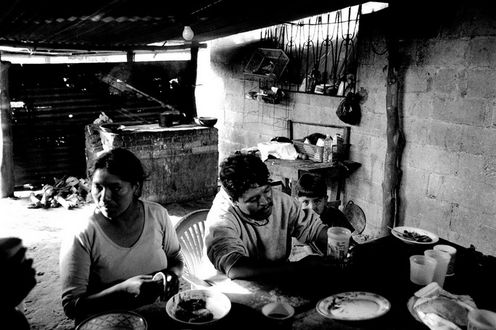
Indigenous people are estimated to comprise 4.5% of the total global population. They are often overrepresented in HIV data and recognise themselves as being particularly vulnerable to HIV.
In Canada, for instance, First Peoples make up 4% of the population but account for 23% of HIV diagnoses.
But the bigger problem affecting Indigenous peoples is where data doesn’t exist. Of an estimated 5,000 groups of Indigenous peoples worldwide, accurate HIV data exists for only a handful of distinct groups.
In countries where data does exist, there are often major gaps. Data invisibility equates to disparity, inequity and ultimately increases the risk of escalated epidemics.
Such epidemics have grave implications for Indigenous cultures, given that many tribes or clans have only a few hundred to thousand members remaining. If HIV were to enter these communities, the world’s ancient cultures and customs, and custodians of lands, would be lost forever.
Of course, being Indigenous is not a risk factor for poorer health outcomes or for HIV. But the social determinants of health – income, education, employment and working conditions, physical environments, healthy childhoods and access to health care – all impact on health status of Indigenous peoples heavily.
There are also specific determinants that increase Indigenous populations’ vulnerability to HIV. These include:
- maintaining access to lands and territories when government and private companies also want access these lands to extract resources;
- the ongoing impact of colonisation, particularly inter-generational trauma inflicted on families and communities by past policies directed solely toward Indigenous peoples; and
- the struggles caused by poverty. These impact heavily on women and children in some countries, who are often forced into the sex trade.
These factors not only add to HIV vulnerability for Indigenous people; they exponentially increase the risk with each additional determinant.
So, how are Australia’s First Peoples faring?
Rates of HIV are slightly higher among Aboriginal and Torres Strait Islanders: 5.4 cases per 100,000 compared with 3.7 in the wider population. This equates to an overall Indigenous prevalence rate of 0.15%. But the patterns of HIV between non-Indigenous Australians and the First Peoples of Australia are vastly different.
Over the last five years, 50% of new HIV diagnoses among First Peoples were attributed to sex between men compared to 76% of non-Indigenous cases. Around 12% of cases were attributable to injecting drug use compared to 3% of non-Indigenous cases. And the rate of diagnosis among First Peoples women was three- to five-times higher than among non-Indigenous women.
The higher diagnosis rates of HIV are also reported at a younger age. First Peoples of Australia also experience higher rates of other sexually transmitted infections, increasing injecting drug use and continued elevated risk factors among men who sex with men. These factors combine to create a powerful base for HIV to escalate rapidly within communities.
On top of this, Indigenous communities are often marginalised and report having less access to health services.
With the risk factors in place, and in regards to the future HIV response, the First Peoples of Australia are at a crossroads. We can either scale up our actions to reduce the risk of HIV or continue along the same path and allow HIV to take hold in our communities.
All the signs are there. We will soon be trying to deal with a much more insidious problem, like so many other nations and populations.
Australia’s historical approach in dealing with HIV has been one characterised by a participatory partnership approach. We have had overarching frameworks such as harm-reduction approaches to deal with risk in sex workers and peoples who inject drugs. And some high-profile campaigns about HIV have resonated in communities for the last 30 years.
But as the world becomes more digitised, globalised and moves more quickly, we need to step up the pace of our efforts so Indigenous peoples are not left with HIV. The Eora Call to Action urges governments and community organisations to step up and commit to:
- reducing the number of new Indigenous HIV infections by 50% by 2017
- reduce rates of other STIs in communities
- reduce all mother-to-child transmissions and, importantly
- reduce rates of sharing between people who inject drugs.
Being true to these targets will stand us as outstanding international leaders into the future.
James Ward is a recipient of both NH&MRC and ARC Research Grants as well as Governemnt monies for the conduct of research in indigenous communities.
